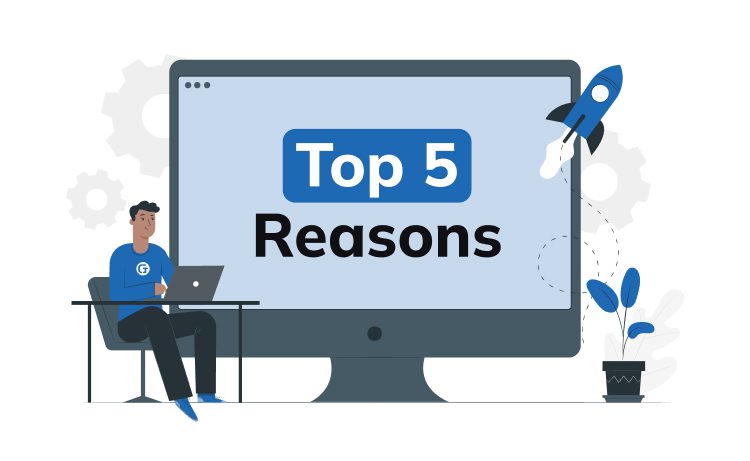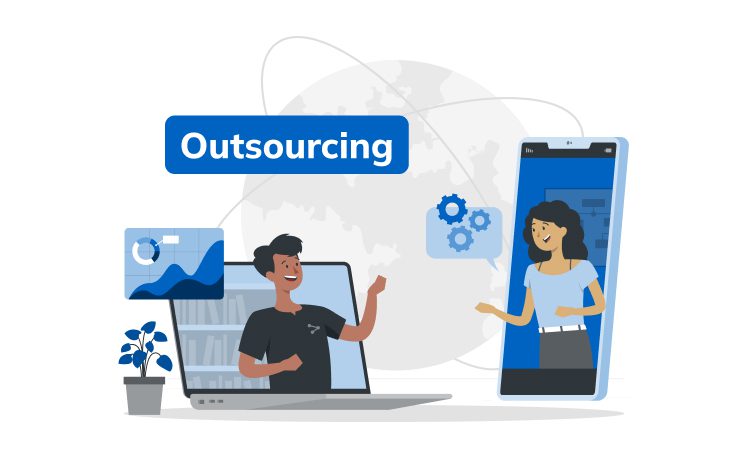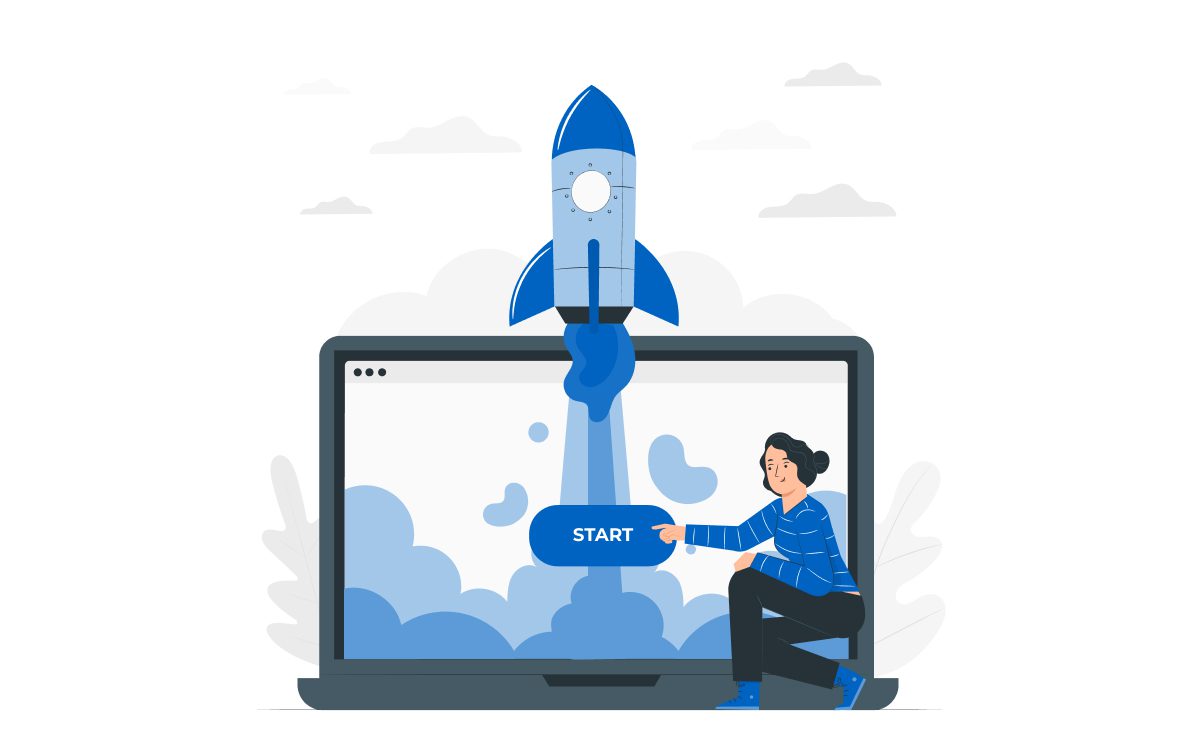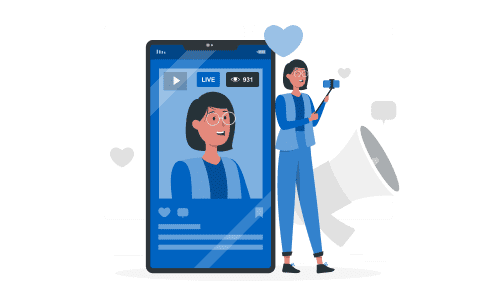
How to Create a Successful Live Streaming App



In the rapidly evolving digital landscape, businesses find themselves in a continuous quest to stay relevant and connect with their audience effectively. With technological advancements reshaping consumer behavior, it has become vital to embrace innovative tools and approaches. Amidst this ever-changing environment, one dynamic force has emerged as a game-changer—live streaming.
If you want to build a live streaming app, rest assured that you’ve come to the perfect destination. Here, we can guide you through the world of live streaming and help you unlock its remarkable benefits for your business’s growth and engagement.
Content
Live streaming, in simple terms, refers to broadcasting real-time video content over the internet. It allows businesses to interact with their audience instantaneously, sparking a sense of excitement and immediacy that traditional media may struggle to replicate.
The real-time connection is like a bridge that enables companies to reach out and engage with their customers, clients, and followers in a whole new way.

According to Vantage Market Research the size of the global streaming market in 2021 was estimated at $988 million. By 2028 it is projected to increase to $4.3 billion; the average annual growth rate will be 23.5%. According to Statista almost half of the users surveyed are attracted by the ability to view content at any time and place. Another 44% value streaming video for its originality and relevance, and 32% the main factor was its high quality.
The association with the gaming industry is characteristic of modern live streaming apps; video broadcasting of cybersport tournaments and gameplay is gaining more and more popularity. As for apps for broadcasting such content, the undoubted leader here is Twitch – the brainchild of Twitch Interactive, a subsidiary of Amazon.
Enough arguments in favor of the promise of video streaming? Then it’s time to talk about how to develop a quality app that will put you in the top streaming providers.
Before proceeding with video streaming app development, it’s essential to choose the type of product that best suits your needs. Currently, there are three main types of such software available in the market. Taking the time to understand these options will pave the way for a more informed decision-making process.
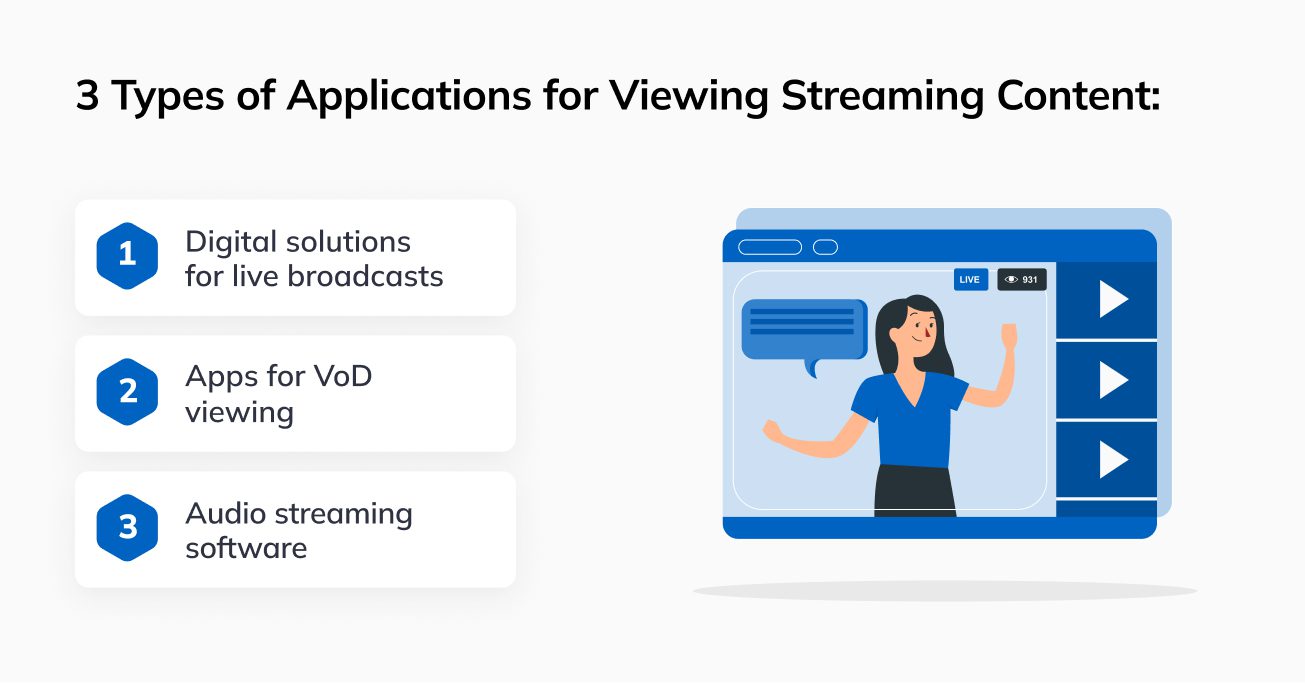
This type includes apps that allow users to watch videos in real-time. These platforms can broadcast gamers’ gaming sessions, on-the-spot reports, online conferences, and anything else that interests viewers here and now. Popular digital products of this type include YouTube Live, Ustream, Facebook Live, Instagram Live, Twitch, and others.
Advantages of such software include:
This format has some disadvantages. For example, viewers are limited by time, you can watch the content only during its broadcast, and it is not available in the recording. Also, creating an app for live streaming is technically more complicated and, accordingly, more expensive than its alternative – a software product for watching video on demand.
Video on Demand, or VoD, allows viewers to watch the content they are interested in in a recorded format, and this is its main advantage over live streaming. The rhythm of modern life dictates its own terms, not allowing users to adjust to the streamer’s schedule. Therefore, many live streaming platforms have made the intelligent decision to accommodate their viewers by adapting their content for VoD apps. Leading platforms that support VoD playback are Netflix, Amazon Prime, Apple TV, HBO, and many others.
Video on Demand, or VoD, allows viewers to watch content in a recorded format, and this is its main advantage over live streaming. The rhythm of modern life dictates its own terms, not allowing users to adjust to the streamer’s schedule, and many live streaming platforms have decided to accommodate their viewers by adapting their content for VoD apps.
The only downside to this streaming format is the time delay in delivering content.
The leading platforms supporting VoD playback are Netflix, Amazon Prime, Apple TV, HBO, and many others.
An alternative to video streaming apps is audio streaming software. Leading providers provide users with access to millions of audio files. Most of them allow you to select content (Spotify, Apple Music, Amazon Music, Deezer, Pandora Premium, etc.). Some only work in radio mode (e.g., Pandora and UnRadio).
The video streaming industry is highly competitive, with more than 200 streaming services available to global users in 2023. In addition, the main share of viewers is held by recognized industry giants, such as Netflix or Amazon Prime Video.
Therefore, to win your audience, how you build a live streaming app should be thought through to the last detail, and it is not a video streaming app development that you should start with.
Live streaming app development based on assumptions is doomed to failure. Study your target audience: their average age category, interests, and location. Ideally, talk to their representatives. In this way, you can build a live streaming app people are interested in and, at the same time, get the first beta users of your product.
Creating any app, first of all, pursues an important business goal: making a profit. Therefore, sooner or later, you will face the question of how to get this profit from streaming video broadcasts.
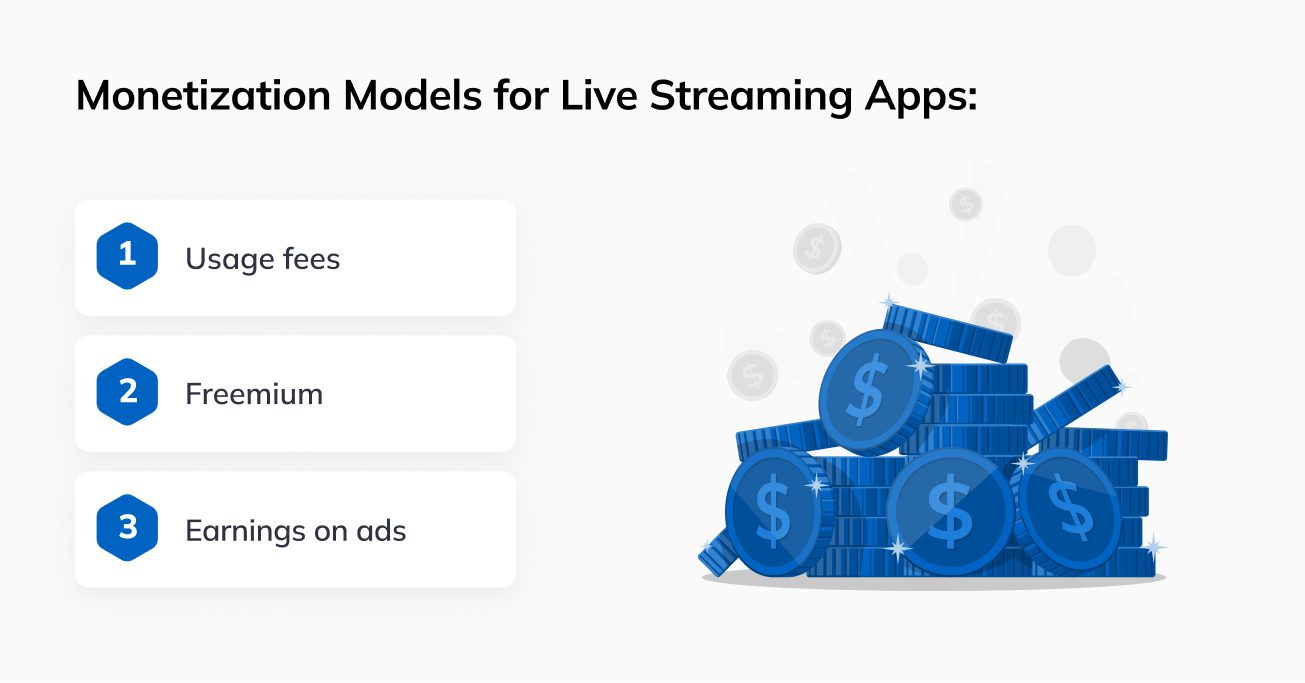
There are three most popular models for monetizing such digital services:
The leading live streaming services rarely use any of the strategies described in their pure form. For example, Twitch earns money from paid subscriptions, advertising, and selling so-called bits, the virtual currency used in-game chat.
CDN is a network of interconnected servers that provides a high speed of content delivery to users. Yes, it is an additional cost at the initial development stage, but this technology’s benefits allow the entire investment to pay off quickly. Using a CDN helps reduce bandwidth costs, increase the quantity and quality of content delivered, and reduce the time it takes.
It is good if your company can afford a full-time development team to build a live streaming app. Such specialists are always at work, have long since overcome all possible problems with communication, and are deeply immersed in the specifics of your business. But along with all the advantages, hiring in-house specialists has its disadvantages.
You’ll have to pay them a steady salary, even when the work on the project is not in progress. In addition, do not forget the cost of office rent and maintenance and regular investments in staff development and training.
In short, if you don’t have a full-time live streaming app development team, don’t rush to hire one. An excellent alternative to the classic employment model is the services of outsourcing companies. Their providers will find developers with the appropriate technology stack, experience, and expertise to build your live streaming app. You only have to voice your wishes on the finished product and wait for the result.
This hiring model is much more economical than keeping a full-time team; you pay for the work done or the number of hours worked.
Users do not tolerate interruptions in streaming video and low-resolution content, so choose a reliable platform for hosting, streaming, and storing data. With today’s technology, it makes more sense to use a cloud-based file hosting service like Amazon Simple Storage Service. Trust us, as the number of users increases and the software scales, you’ll feel the benefits of your choice.
During the product discovery stage for a live streaming app, the focus lies in understanding user needs and market trends. This involves conducting thorough research to identify target demographics, uncovering user preferences for content types, and exploring the technical requirements for seamless streaming experiences. Additionally, competitive analysis and user feedback collection play a vital role in shaping the app’s features and functionalities to meet user expectations while aligning with industry standards.
The reliability and uptime of your app are critical, and your users will surely appreciate these parameters when they use the software. But, as they say, it’s all about the look, so a good look and user-friendly interface is the first step to attracting an audience.
Choosing a development company, prefer the one that provides comprehensive services. After all, only close cooperation between frontend, backend developers, and designers can maximize the user experience.
Like every software solution customer, you probably have your own vision of the finished product. You know exactly what features your app should have and how they should be implemented. But how do you check whether your idea coincides with the needs of your target audience? How can you make sure that the development money will not be wasted?
The best way before releasing a full-fledged app is to order the development of a minimum viable product. This app has a limited set of the most important features, which is created to test its relevance with users.
Failing to prioritize quality control in software development can lead to significant costs for the customer. Statistics show that addressing a bug during the testing phase is approximately 6.7 times less expensive than dealing with it after the software’s release.
Emphasizing rigorous testing and quality assurance ensures a smoother and more cost-effective development process, benefiting both the customer and the overall success of the software product.
Once the general public has warmly welcomed your MVP, you can continue working on the full digital solution: scale it up, add advanced functionality, and fix detected shortcomings.
Let’s talk about the last two stages of creating a live-streaming app in more detail. How to decide which functionality should be implemented in the MVP and which can wait?
Think about promoting your digital product before it even hits the market. Make sure that people start talking about the launch of the new service. Launch an advertising campaign, connect your Influencers, and take advantage of SMM. In the end, arrange for several broadcasts with popular streamers; let them attract their audience to your platform.
Now, let’s talk about a minimum viable product. An MVP is a version of a product that has the minimum set of features required to satisfy early customers and validate the product idea with minimal effort and cost. It is an initial iteration of a product that allows you to test its core functionality, gather user feedback, and make informed decisions about future development.
 When developing your video streaming app, it is crucial to include essential features that are indispensable for a seamless and user-friendly experience. These core features are essential to ensure the app’s usability and functionality, forming the foundation for a successful and engaging platform:
When developing your video streaming app, it is crucial to include essential features that are indispensable for a seamless and user-friendly experience. These core features are essential to ensure the app’s usability and functionality, forming the foundation for a successful and engaging platform:
If the MVP release is successful, you can start improving the product and add other user-friendly features to it.
To ensure scalability and smooth performance, it is crucial to prioritize the architecture and DevOps aspects of your live streaming app. Involving a skilled solution architect to build your live streaming app from the beginning can help design a robust infrastructure that can handle increasing user demand.
User experience is paramount in live streaming apps. Invest in high-quality video streaming capabilities to provide uninterrupted and seamless viewing experiences. Prioritize optimizing video delivery and minimizing buffering to meet user expectations.
Launching a minimum viable product (MVP) is a smart strategy for testing and validating your live streaming app’s market potential. Gather feedback from early users, iterate based on their needs, and continuously improve the app’s features and performance to maximize its chances of success.
Anton KumechkoTechnical Project Manager, Glorium Technologies
To decide what other features consumers might be interested in, study competitors’ offers, conduct a survey on your social networking page, in short, research the needs of your target audience. Examples of features you might consider include:
Experienced live streaming app development engineers will listen to your vision of the finished product, conduct an in-depth business analysis and help you choose the features you need.
If you already have an idea for a live streaming app development, why don’t you discuss it with our manager? Together we will find the best way to implement it.
As with any software, before starting live streaming app development, your team will have to decide on the technology stack to use. It will depend on what tasks they are facing and what goals the customer is pursuing.
As for programming languages, the choice here is wide enough – developers can choose Java, Swift, Kotlin, or another option. The same applies to databases; it is quite suitable for the popular MySQL or Oracle. Let’s focus on the tools that are specific to this industry.
Video streaming protocols
The main task when streaming video content is to organize video transmission of good quality and with minimal delays. Two types of streaming protocols are suitable for this: RTMP and WebRTC.
RTMP is a real-time messaging protocol, the use of which provides high-quality transmitted video. Whereas due to low bandwidth, content can be delivered to users with a delay of up to 20 seconds. RTMP is the optimal solution for video broadcasting of conferences, concerts, and other events for which low latency does not play a major role, while the quality of content is fundamentally essential.
WebRTC, or Web Real Time Communications, is a protocol that allows you to broadcast video with minimal delay, up to 1 second. With sufficient bandwidth, the quality of the content will not suffer either. These characteristics of the protocol make it the best solution for real-time communication; it is most often used in video conferencing applications.
In order to achieve high video broadcast performance and make it available to the audience, it is important to choose a reliable content delivery network. We recommend Cloudflare, favored by Discord, Reddit, and Twitch, and Amazon CloudFront, a favorite of Hulu, Amazon Prime Video, and Blockbuster.
Not all cloud platforms have features suitable for video streaming. The optimal solution for video streaming is Amazon Web Services. This commercial, public cloud allows you to efficiently manage streams, host an app, and deliver content to users.
You will also have to choose a platform for media processing (such as Wowza), a tool for sending Push notifications (we suggest trying Firebase), and a message queue service (as an option, Amazon SQS).
The cost of developing any app depends on many factors, including the technology used and the level of specialists involved (a team of Junior developers will cost less than the services of Senior specialists). We have analyzed the market for developing live-streaming apps and derived the average cost of creating each feature.
| Feature | Average cost |
| Authorization | $4,000 |
| User profile | $3,250 |
| Search option | $6,500 |
| Main app screen | $5,000 |
| User gallery | $3,000 |
| Commenting system and rating | $4,250 |
| Video streaming | $11,000 |
| Total price | $37,000 |
We have listed the mandatory features of a live-streaming app that should be implemented at the MVP creation stage. Further costs depend on what additional functionality you plan to implement in your digital solution. For example, adding a donation system to the app will cost around $2,400, chat moderation will cost $3,400, and an experienced UI/UX designer will charge at least $4,000 for their services.
We developed video streaming capabilities and technology implementation for Doxy.me, an Italian start-up that enters the healthcare market with a simple, free, and secure telemedicine solution. Doxy.me makes it easier and more affordable for healthcare providers to care for their patients by enabling them to conduct appointments via video-calling.
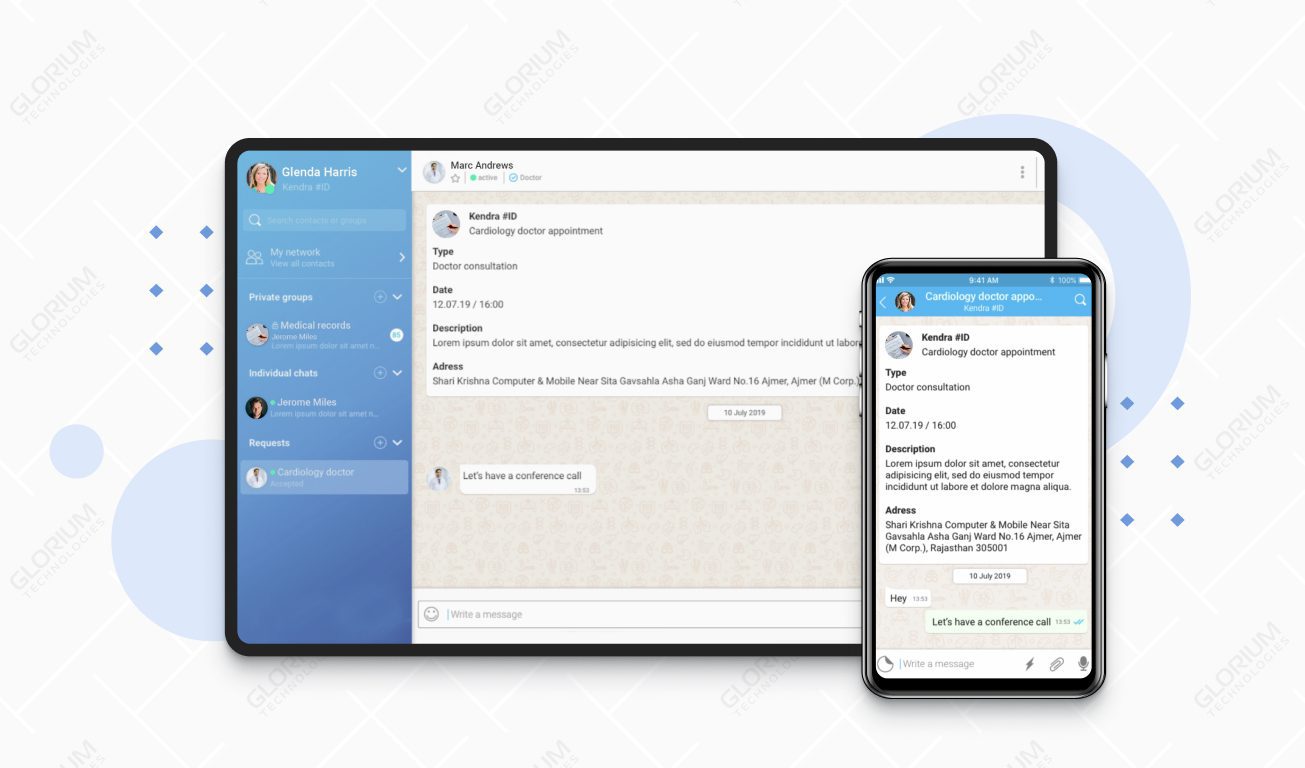
As secure data transmission and patient privacy is the client’s main priority, we utilized the latest security and encryption protocols, making Doxy.me compliant with HIPAA, GDPR, PHIPA/PIPEDA, & HITECH requirements. We also equipped Doxy.me with high-quality HD video and audio to ensure users have the best experience possible.
With our help, Doxy.me released a more affordable web and mobile app that enables healthcare providers to treat their patients from anywhere, including rural and underserved areas.
The video streaming encrypts all data, makes all sessions anonymous, and doesn’t store user data. The solution is also cross-platform and cross-device and targets a broad audience, making it extremely easy-to-use for both clinicians and patients.
Glorium Technologies is a leading software development company with a proven track record of excellence and years of experience in the technology industry. With our team of highly skilled and dedicated developers, we possess the expertise required to create a cutting-edge live video streaming app from the ground up.
From conceptualization to deployment, we provide end-to-end solutions, ensuring that your live video streaming app meets the highest standards of performance, security, and user experience. The Glorium developers are well-versed in building scalable architectures that can handle large user bases and high volumes of video content with ease.
Contact us to transform your vision into a reality and embark on a successful journey in the world of live video streaming.
Building a successful live streaming app in 2023 requires careful planning and consideration of various factors. Glorium Technologies, as a leading software development company, can guide businesses through the process and help them harness the benefits of live streaming for growth and engagement. With a track record of excellence, Glorium offers expertise in AI-powered solutions and applications.
Key steps in creating a live streaming app include analyzing the target audience, choosing a monetization model, selecting a content delivery network (CDN), and deciding on a development team model. Prioritizing quality UI/UX design, developing a marketing strategy, and launching a minimum viable product (MVP) are essential for success. Additional functionality, such as extended user profiles, donations, chat, and advanced search, can increase audience loyalty.
Selecting the right technology stack, including video streaming protocols like RTMP or WebRTC, CDN, cloud platforms like Amazon Web Services, and other tools, is crucial for seamless performance. The cost of building a live streaming app can vary based on features, ranging from essential components to additional functionalities.
Glorium’s expertise includes working with Doxy.me, a telemedicine solution, ensuring secure data transmission, and providing high-quality video and audio for a seamless user experience.
The timeline for developing a live stream app can vary based on several factors. The complexity of the app’s features, the size of the development team, and the availability of resources all play a role in determining the development timeline.
Generally, the process can take a few months, starting from the initial planning and design phase, followed by development, testing, and deployment. It’s crucial to allocate sufficient time for thorough testing and quality assurance to ensure a stable and reliable app that meets user expectations.
For maximum reach and accessibility, a live stream app should be designed to support multiple platforms and devices. This typically includes iOS and Android platforms for mobile devices, as well as web support for desktop users.
Ensuring compatibility across different devices and operating systems allows a wider audience to access the live stream content seamlessly, enhancing user engagement and interaction.
Content protection and user privacy are paramount in live streaming apps. Encryption protocols ensure that data transmitted between users and servers remains secure and private.
Secure authentication mechanisms prevent unauthorized access to live streams, and digital rights management (DRM) can safeguard copyrighted content from unauthorized distribution. Robust user authentication and authorization processes further enhance the app’s security.
To accommodate various devices and network conditions, the app should support adaptive streaming, which adjusts the video quality based on the viewer’s internet connection and device capabilities. This ensures that users with slower connections or lower-end devices can still enjoy a smooth live streaming experience without buffering or playback issues.
Live streaming apps thrive on user engagement and interactivity. Features like live chat, real-time comments, interactive polls, and audience participation in Q&A sessions create a sense of community and make viewers feel involved in the live stream. Social sharing options also encourage users to share the content with their networks, further boosting engagement and expanding the app’s reach.
There are several ways to monetize a live stream app. Advertisements and sponsorships can provide revenue through targeted advertising and partnerships with brands. Pay-per-view events, subscriptions, or premium content offerings can unlock exclusive access to certain live streams or additional features.
Additionally, virtual gifting from viewers allows fans to support content creators and contribute financially to the live stream experience.
A scalable infrastructure is essential for accommodating increasing user traffic and ensuring optimal performance during peak usage. Cloud-based solutions, such as AWS or Google Cloud, offer flexibility in resource allocation and scaling, allowing the app to handle fluctuations in viewer numbers smoothly.
Latency can be a concern in live streaming, as delays between the broadcast and viewer reception can impact real-time interactions. Content delivery networks and adaptive streaming techniques can help minimize latency, ensuring that viewers experience the live stream as close to real-time as possible.
Launching the app is just the beginning of the journey. Ongoing maintenance, regular updates, bug fixes, and customer support are essential for ensuring the app’s continued success.
Addressing user feedback and adapting to changing technological landscapes will help keep the app relevant and competitive in the dynamic live streaming market. Regular monitoring of server performance and security updates are also critical to maintain the app’s stability and data protection.
Certainly! If you possess the requisite programming skills and a good understanding of live streaming technologies, you can create a live streaming app to fulfill your vision and offer unique features to your users. It will require careful planning, implementation, and testing to ensure a successful and engaging app.
Glorium Technologies will be happy to help you. We are ready to allocate a team for your project and launch MVP from scratch in three months. If you are looking for dedicated developers for your project, why don’t we get in touch?


